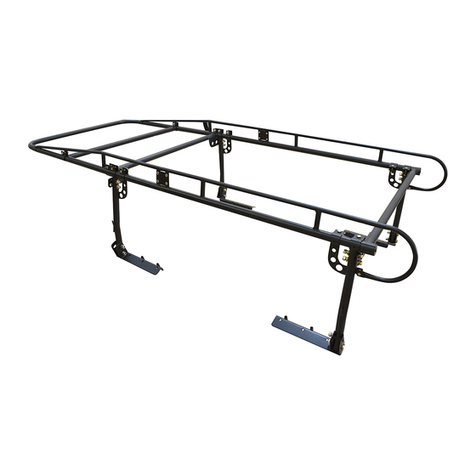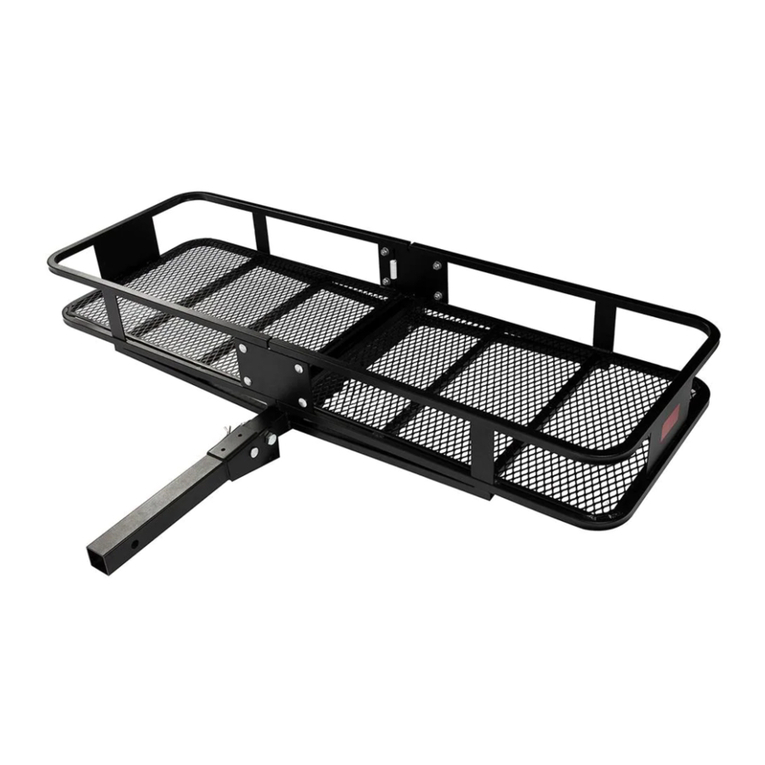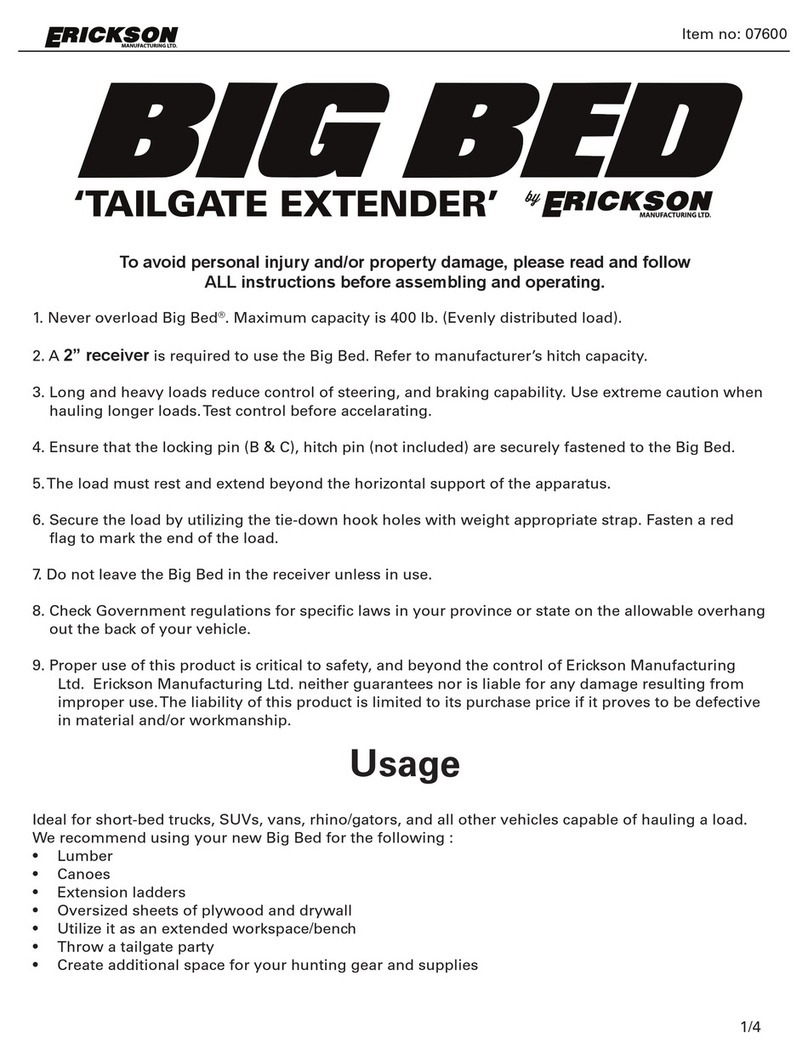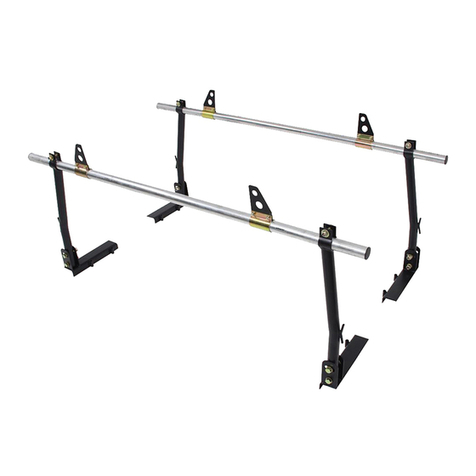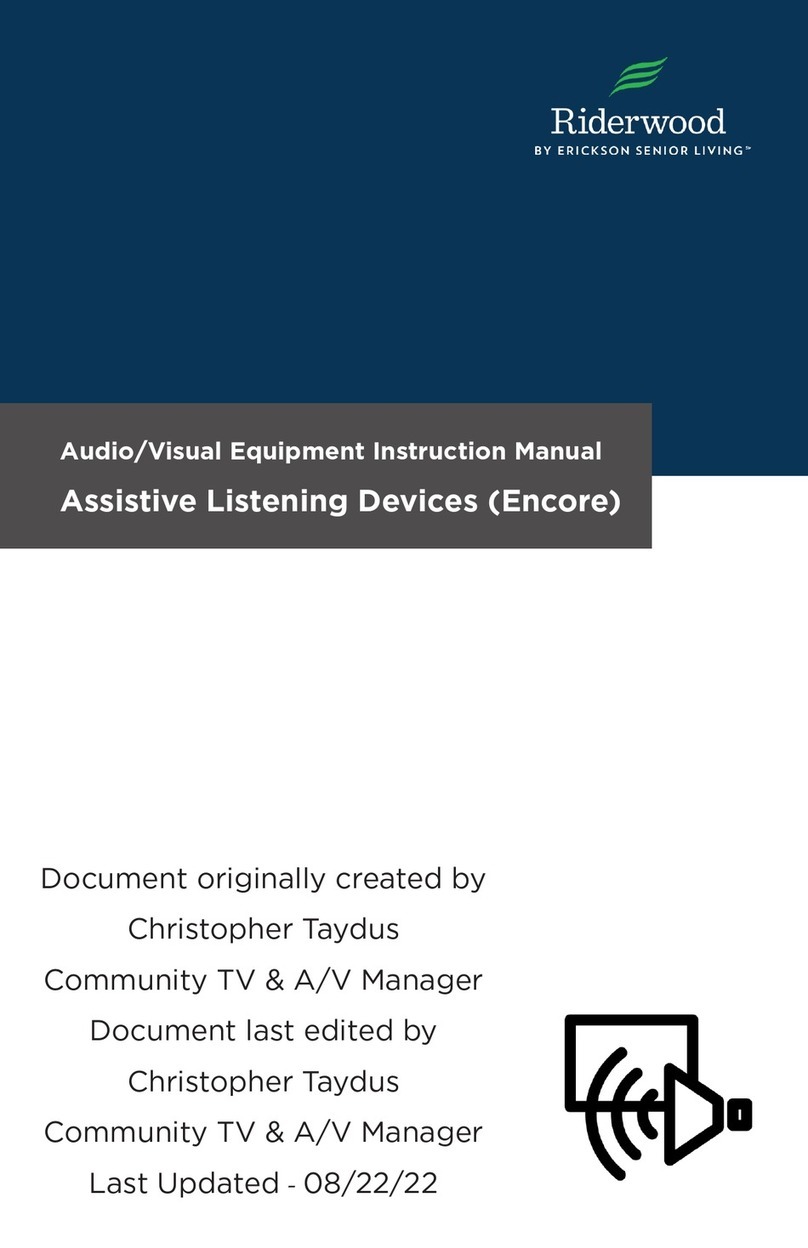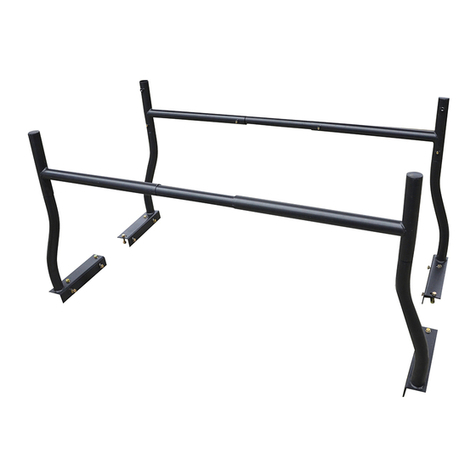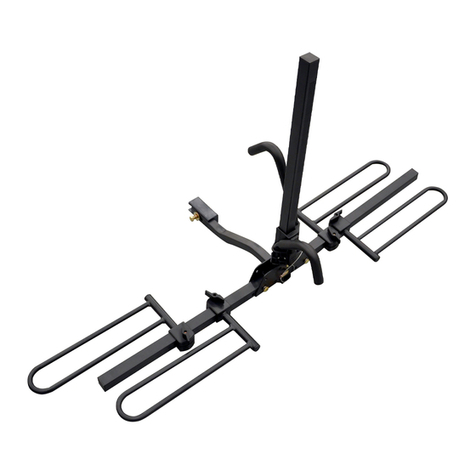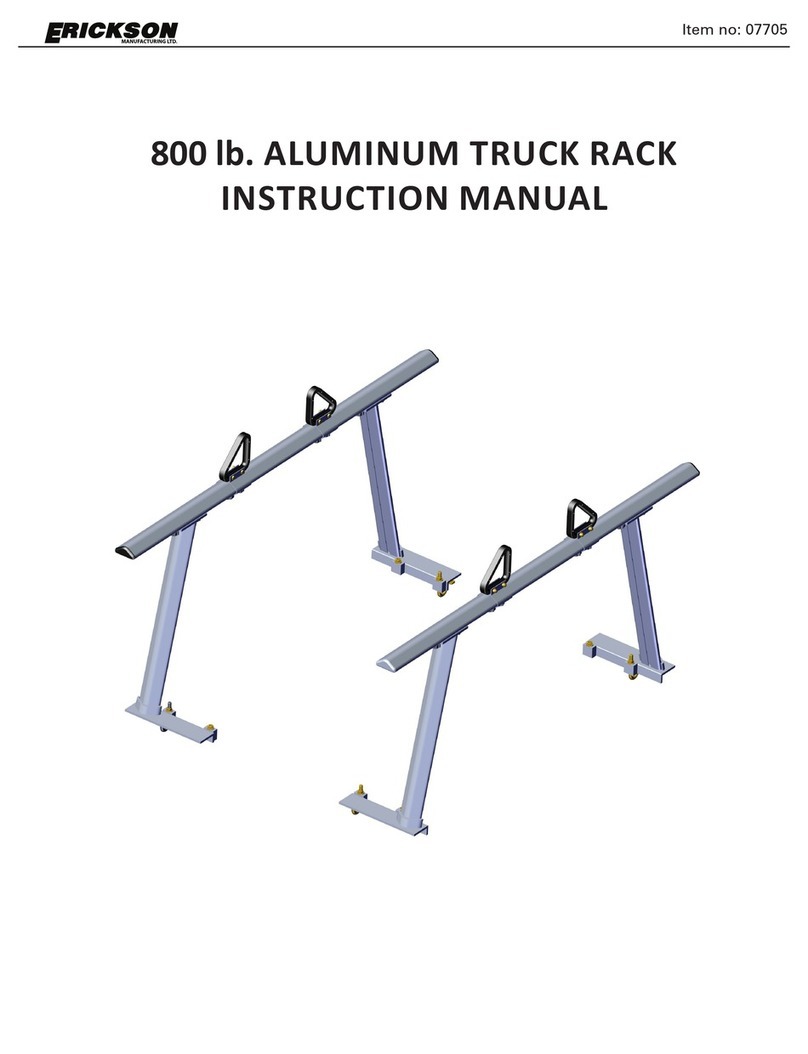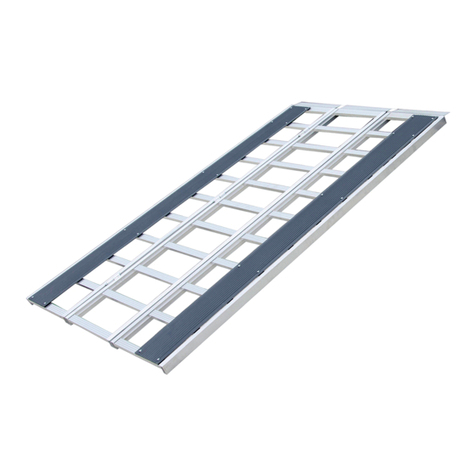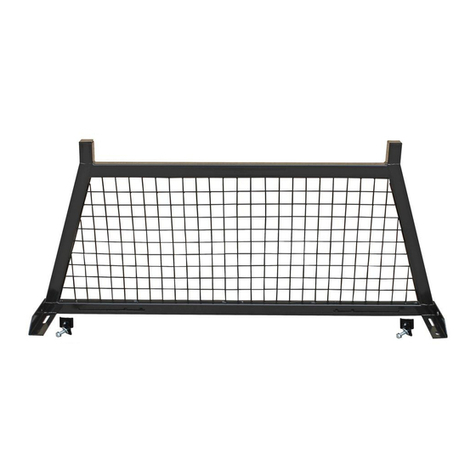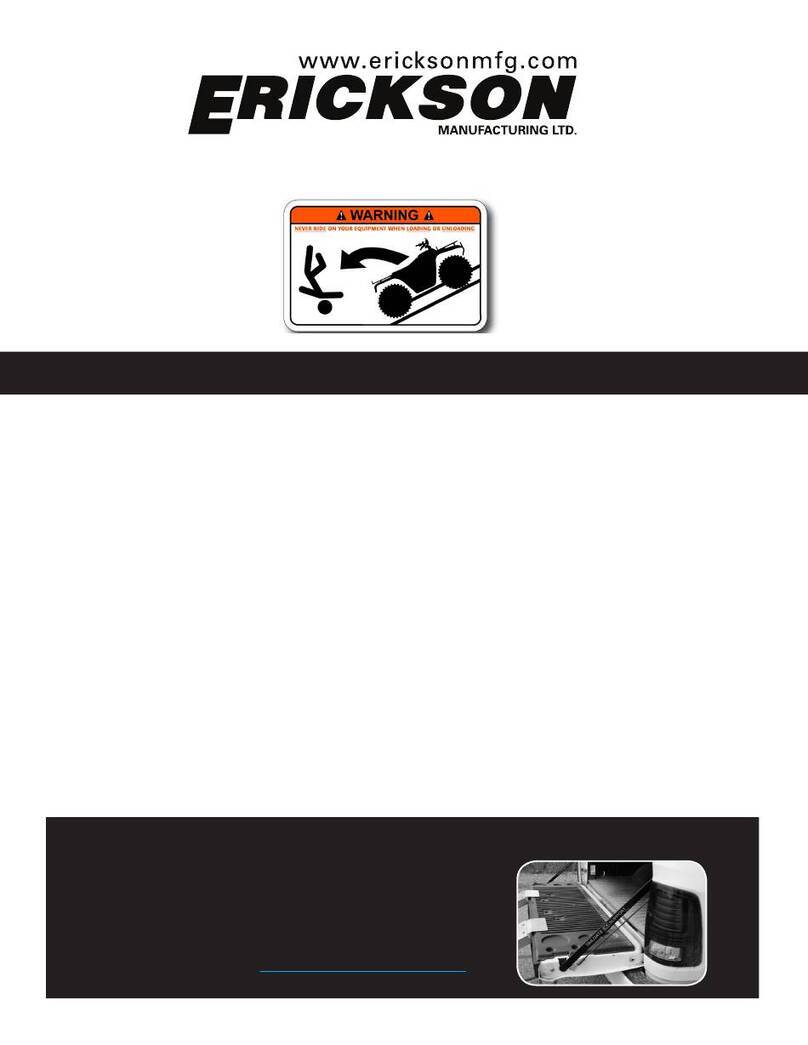
Item no: 07494
SAFETY WARNINGS AND PRECAUTIONS
WARNING: When using product, basic safety precautions should always be followed to reduce the risk of
personal injury and damage to equipment.
Only use the cargo carrier with a properly installed 2 in hitch receiver capable of supporting
the Cargo Carrier and its load. Refer to Hitch Manufacturers specications and load capacities before using.
Read all instructions before using this product!
1. Keep work area clean. Cluttered areas invite injuries.
2. Observe work area conditions. Keep work area well lighted.
3. Store idle equipment. When not in use, the Carrier must be stored in a safe and clean location. Always
lock up products and keep out of reach of children.
4. Use the right product for the job. There are certain applications for which the Cargo Carrier was designed.
Do not modify the Cargo Carrier and do not use the Cargo Carrier for a purpose for which
it was not intended.
5. Check for damaged parts. Before using any product, any part that appears damaged should
be carefully checked to determine that it will operate properly and perform its intended function.
Check for any broken or damaged parts and any other conditions that may affect its operation.
Replace or repair damaged or worn parts immediately.
6. Replacement parts and accessories. When servicing, use only identical replacement parts.
Use of any other parts will void the warranty.
7. Do not exceed the product’s maximum load capacity of 400 lbs. Based on evenly distribute weight,
CAUTION NOT INTENDED TO BE USED AS A STEP!
8. Only use the Cargo Carrier with a properly installed 2 in. hitch receiver capable of supporting the Cargo Carrier
and its load. If the Cargo Carrier is installed on a Class II receiver, total weight, including carrier, is limited to 350
lbs.
9. Use eye protection. Always wear ANSI-approved impact safety goggles when setting up, loading and
unloading the Cargo Carrier. Wear gloves and avoid sharp edges when assembling and when loading
and unloading the Cargo Carrier.
10. Do not allow children to play on, stand upon or climb into the Cargo Carrier. The Cargo Carrier
is not for carrying people or animals.
11. Always check hardware and assembled parts after assembling. All connections should be tight and
hardware tightened.
12. Always distribute objects in the Cargo Carrier evenly. Uneven weight distribution could
cause tipping.
13. Be aware of dynamic loading! Suddenly dropping or bouncing a load on the Cargo Carrier may create,
for a brief instant, an excess load, which may result in damage to the product and/or personal injury.
Additionally, if the vehicle hits a bump, a slight play in the receiving hitch or a movement in the load
could result in a momentary dynamic loading effect that could dramatically increase the actual weight
load. Check the hitch-to-carrier connection for any looseness. This momentary dynamic loading effect
could result in damage to the Cargo Carrier, the load and possible personal injury.
14. WARNING: Be aware of the possible risk of fire and damage to property resulting from the
vehicle’s exhaust system pointing at or running near the cargo loaded on the Cargo Carrier. Before
installing the Cargo Carrier, check to make sure that the exhaust pipe is not pointing in the direction
of the cargo. Flammable cargo can ignite from exposure to heat. Other cargo can be damaged from
the heat. Always be aware of this potential danger, and never use the Cargo Carrier if the risk exists.
15. Follow DOT/MOT guidelines for installation and use.
16. Do not exceed 65 MPH while carrier is attached.
!
!
